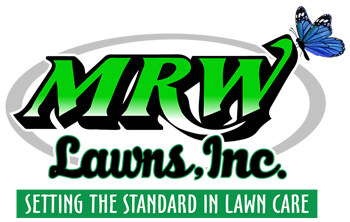Armyworms have been causing a lot of damage in our area this season, here’s what you need to know:
The fall armyworm (Spodoptera frugiperda) problem is widespread across several states including Maryland, Virginia, North Carolina, Ohio, Tennessee, Texas, and Kentucky. All lawn care companies and some farmers growing grains are affected by this pest. Armyworms are not a worm, but the larval stage of a type of moth. They are called armyworms, because of the way they move across fields in an army-like fashion. Chemical applications must target the larval stage, if the population is in the pupal or adult stage, it is not effective to spray.
Armyworm pressure is high this year because of the weather. The moths migrate north every year and usually do not reach the Mid-Atlantic until later in September. They arrived early this year because of the number of southern storms that followed a path from southwest to northeast. The moths are caught up in upper-level winds and deposited as the storms move. The adult moth’s mate and lay eggs. The larva feed in a pattern and literally strip the green parts of the turf.
While it might seem like we are in a lull right now, it is expected that there will be another generation toward the end of September. However, if we have fall-like weather, the lawns will grow vigorously and more than likely recover and be able to grow out of the damage. Please be encouraged to be patient as we have already started to experience the turf coming back in many lawns. While we can’t promise full recovery, the likelihood of that happening is very good. This year is a good year for aeration and overseeding and we encourage you to take advantage of this time in fall to seed and aerate the lawn. We also have service calls available for lawns that are unable to out-grow the second generation.
If possible, we recommend watering damaged areas in the heat of the day to keep the crowns cooled down and hydrated. This should be kept up until a visible green cover returns to shade the crowns. Home lawn recovery also involves fall fertilizer applications to support the regrowth of the blades. Fortunately, the first fall fertilizer application can be made right now. With this in mind, we have started our fall applications early this year. In fact, you may have already had your first fall fertilizer. The second will be done in 8-10 weeks, before December 1.
If you’re worried about these pests ruining your lawn and wasting your investment, please consider the many benefits of our services besides the lush top foliage of the tall fescue/bluegrass blend. Our weed controls continue to control weeds. Things like fertilizer, Mirimichi Green Soil Enhancer, and lime are still reacting with the soil helping to create an environment where the lawn can recover. Topsoil, compost, tilling, and seeding are all beneficial service that you have not lost the benefits of. As always, our service will work to help the lawn recover from stresses like this and our usual summer stress as the temperatures cool down and the lawn starts to grow. Please have patience and work with us to get your lawn to fully recover
In closing, environmental stress and pest problems always offer us the opportunity to adapt. The early summer application has been enough to take care of our surface feeding insects until now. We will once again evolve and offer you a solution to this difficult problem.

